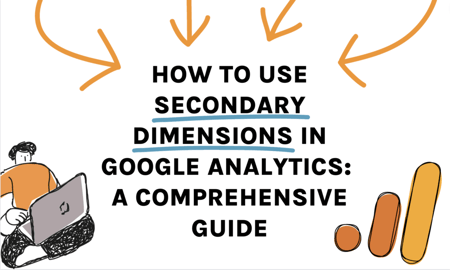Transform Your Data Comprehending With Second Measurements
Discovering data via the lens of secondary measurements opens up a realm of untapped insights, providing an extra nuanced point of view on the complexities of your dataset. By unraveling the layers beneath the surface metrics, you can uncover patterns and relationships that may have otherwise gone unnoticed, leading the method for informed decision-making and strategic optimizations. This strategic utilization of additional measurements not just enriches your data comprehension yet additionally functions as a stimulant for unlocking the full potential of your analytics ventures.
Benefits of Additional Dimensions

Second measurements also allow businesses to carry out even more thorough performance evaluations. By layering added dimensions onto existing information, organizations can examine the effect of different aspects on vital metrics, helping them make more educated choices. In addition, additional dimensions help with the recognition of new possibilities for optimization and development by revealing relationships that may have otherwise gone unnoticed. In general, the utilization of second dimensions brings about more durable and informative data evaluation, encouraging organizations to drive tactical actions based on a deeper understanding of their data.

Exactly How to Implement Secondary Measurements
To properly carry out second dimensions in data analysis, services need to initially identify vital variables that align with their analytical goals and goals. It is essential to think about exactly how these second dimensions will certainly supply extra context and deepness to the key data being evaluated.

Analyzing Data With Additional Dimensions
Utilizing secondary measurements in information analysis enhances the deepness and context of understandings stemmed from main information. By including second measurements into your evaluation, you can obtain a much more thorough understanding of the connections and patterns within your information. This procedure involves analyzing the primary data through different lenses or viewpoints, which can reveal hidden relationships or trends that may not be right away noticeable when examining the information making use of only key dimensions.
Analyzing data with second dimensions enables you to segment and group your information in numerous methods, supplying a more nuanced sight of your dataset. secondary dimensions. This i thought about this division can aid you identify specific elements that may be affecting the results you are researching. By piercing down right into the information utilizing second measurements, you can reveal useful insights that can guide decision-making and method advancement
Best Practices for Second Measurements
When including additional measurements into information evaluation, accuracy in specifying the dimensions is essential for extracting significant understandings. It is essential to choose additional measurements that match the key information efficiently.
Another best technique is to prevent redundancy in measurements. Ensure that the additional measurements include new viewpoints or details to the evaluation, as opposed to replicating details already existing in the key measurements. This will help protect against complication and simplify the interpretation of the data.
Furthermore, it is crucial to take into consideration the scalability of the analysis when picking additional measurements. Pick dimensions that can be quickly expanded or adjusted as needed to accommodate future data needs or adjustments in logical focus. By following these best techniques, analysts can optimize the value of additional dimensions in information evaluation and gain deeper understandings right into their datasets.
Making The Most Of Insights Via Additional Measurements
Including additional dimensions purposefully improves data analysis by supplying a much deeper understanding of the partnerships within the dataset (secondary dimensions). By optimizing insights through secondary measurements, experts can discover beneficial patterns, patterns, and reliances that might not be instantly evident when taking a look at the data via primary dimensions alone
One key benefit of utilizing additional measurements is the capability to sector and filter information extra precisely. This segmentation enables a much more granular analysis of certain parts within the dataset, enabling experts to identify relationships and causations that could have Extra resources otherwise been ignored.
Moreover, second dimensions can aid in contextualizing key data factors by adding layers of information that supply an even more detailed sight of the information. This contextualization is important for making notified choices based on an alternative understanding of the dataset.
Verdict
In verdict, incorporating additional dimensions in information analysis processes provides a much more nuanced and comprehensive understanding of info, causing enhanced insights and More about the author strategic decision-making. By integrating added variables that align with logical objectives, concealed fads and connections can be exposed, offering a much more comprehensive and contextualized view of information. This method maximizes the capacity for optimization and reveals brand-new possibilities within procedures.
Generally, the application of second measurements leads to extra durable and insightful information evaluation, equipping companies to drive critical activities based on a deeper understanding of their data.
Utilizing secondary measurements in information analysis enhances the depth and context of insights acquired from primary data.Assessing information with secondary dimensions allows you to sector and team your data in different means, giving a much more nuanced sight of your dataset.When including second dimensions right into information analysis, precision in specifying the dimensions is essential for drawing out significant insights. Make certain that the second measurements add new viewpoints or details to the evaluation, rather than duplicating information already existing in the primary dimensions.